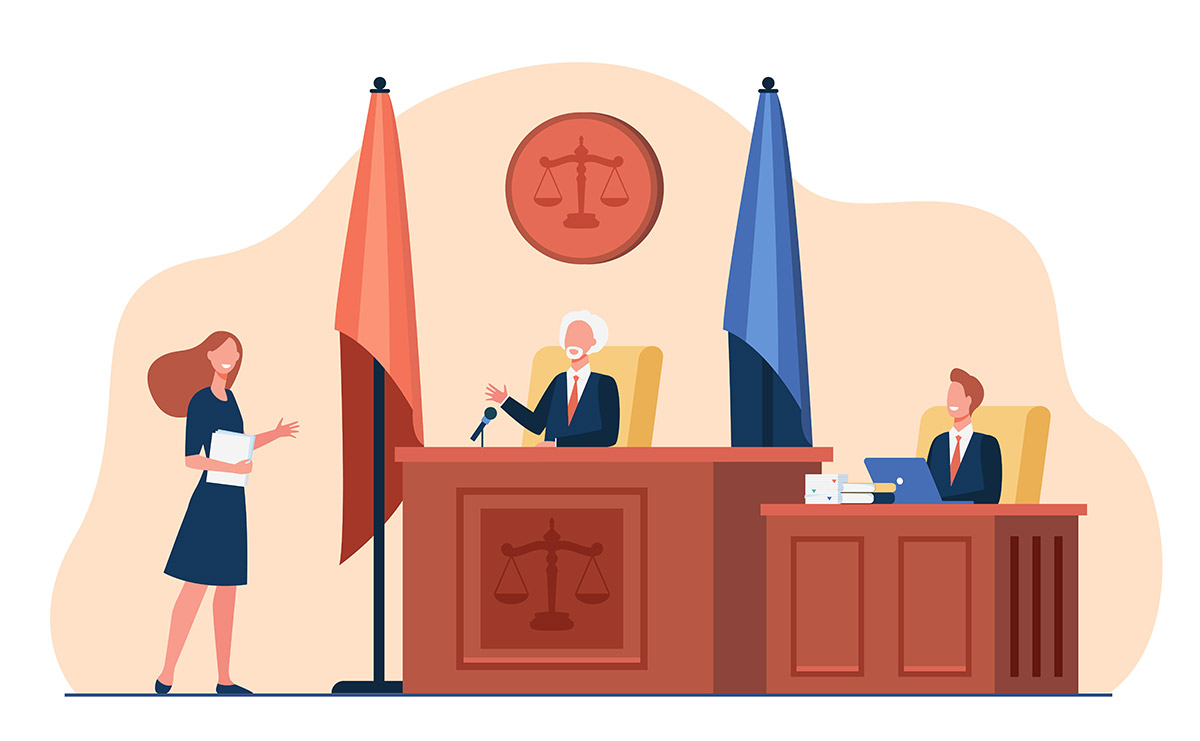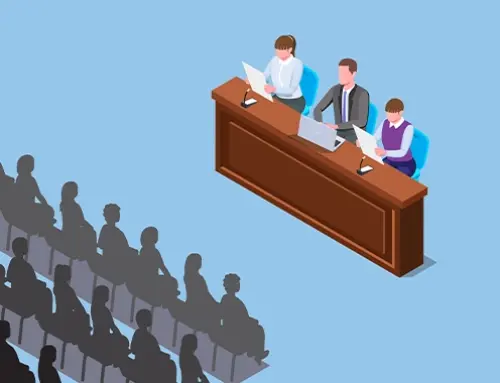Contents
How to Give Opening and Closing Statements at the Court
An engaging and effective opening statement is essential in a trial. It should captivate the jury’s interest and present a clear, concise narrative. Crafting an excellent opening statement involves developing a central theme that can be encapsulated in a single, memorable sentence, word, or phrase. This theme should provide a preview of the forthcoming testimony and supporting documentation without overwhelming the jury with excessive detail. The focus should be on the core issue at hand, avoiding overpromising what might not be delivered.
The opening statement is the trial lawyer’s first opportunity to argue their client’s case and influence the jury’s perception. Therefore, it must be meticulously planned. If the promised evidence is not presented, the lawyer’s credibility can be damaged, giving the opposition a chance to argue that the case was not proven during the closing argument.
An effective opening statement provides insight into the conflict and the individuals involved. It offers an overview that helps the jury understand the evidence that will be presented later. To persuade the jury to believe the testimony, records, and other evidence, the opening statement should establish the lawyer’s credibility from the outset.
Successful lawyers understand that the first and last things the jury hears are more likely to stick in their minds. To maximize their presentation, they utilize the principles of primacy and recency, structuring their order of proofs and presentation of the subject accordingly. The principle of recency suggests that what is heard last is easiest to recall, while the principle of primacy indicates that what is heard first is likely to be believed. Since many jurors are visual and auditory learners, both seeing and hearing an opening statement helps them comprehend it more fully. When making opening statements, consider and address all relevant conditions for the use of proofs and demonstratives.
While the parties may only attempt to persuade the jury of the case’s overall significance after presenting the factual evidence, each side has the opportunity during closing arguments to remind the jury of key evidence and advocate for a favorable interpretation. They can use hypothetical comparisons, comment on witness credibility, and explain how various elements of the case form a compelling narrative. This is their chance to argue why the jury should rule in their favor.
Effective Opening Statements
An effective opening statement in court is crucial as it sets the tone for the trial and frames the narrative for the jury or judge. Here are the key components of an effective opening statement:
Introduction
Start by introducing yourself, your client, and the key parties involved in the case. If it is a jury trial, express your gratitude to the jurors for their service and attention.
Theme
Present a clear and compelling theme that succinctly summarizes your case. This theme should be memorable and resonate throughout the trial.
Facts
Outline the key facts of the case in a logical, chronological order, focusing on those that support your case theory. Stick to the facts and avoid making arguments or giving your opinion. The purpose of the opening statement is to present what you will prove, not to argue the case.
Narrative
Craft an engaging and easy-to-follow narrative. Use vivid, descriptive language to paint a picture of the events. Keep the story clear and concise, avoiding unnecessary details or legal jargon.
Key Evidence
Highlight the crucial pieces of evidence you will present during the trial, including documents, witness testimonies, and physical evidence. Briefly explain how each piece of evidence supports your case.
Witnesses
Introduce the main witnesses you will call, giving a brief overview of their expected testimony. Explain why their testimony is important to your case.
Anticipate the Opposition
Acknowledge any weaknesses in your case and explain how you intend to address them. Preemptively counter the opposition by briefly mentioning the main points you expect the opposing counsel to make and outline why they are flawed.
Conclusion
Reinforce your case theme and summarize the key points. Clearly state what you want the jury or judge to decide, such as a verdict in favor of your client.
Example of an Effective Opening Statement
“Good morning, ladies and gentlemen of the jury. My name is [Your Name], and I represent [Client’s Name] in this case. Thank you for being here and for your commitment to this important civic duty.
This case is about justice for [Client’s Name], who has been wrongfully accused of [charge/claim]. The evidence will show that on the night of [specific date], [Client’s Name] was nowhere near the scene of the alleged incident. You will hear testimony from credible witnesses who saw [Client’s Name] miles away at the time.
We will present a series of text messages and phone records that corroborate this alibi, proving that [Client’s Name] could not have committed the alleged crime. Furthermore, we will bring forward expert testimony to refute the prosecution’s claims and highlight critical inconsistencies in their case.
In conclusion, the evidence will demonstrate that [Client’s Name] is innocent of the charges brought against them. At the end of this trial, we will ask you to deliver a verdict of not guilty, affirming the truth and ensuring that justice is served.
Thank you.”
Effective Closing Statements
An effective closing statement is crucial in summarizing the case and persuading the jury or judge to rule in your favor. Here are key elements to consider when crafting a compelling closing argument:
Review and Reinforce the Theme
Begin by restating the central theme of your case. This reinforces the narrative you have built throughout the trial. Briefly recap the major points and evidence presented, tying them back to your theme.
Summarize the Evidence
Focus on the most compelling pieces of evidence that support your case. Explain how each piece of evidence fits into the overall story and supports your arguments. If applicable, refer back to visual aids or physical evidence presented during the trial.
Address the Opponent’s Case
Identify and dismantle the key points made by the opposing counsel. Highlight inconsistencies, contradictions, or weaknesses in their case. Contrast their weak points with the strengths of your own case, reinforcing why your arguments are more compelling.
Appeal to the Jury’s Sense of Justice
Appeal to the jurors’ sense of right and wrong. Explain why a verdict in your favor aligns with justice and fairness. While staying professional, use emotional appeals to connect with the jury on a human level. Highlight the human impact of the case’s outcome.
Reiterate the Burden of Proof
Remind the jury of the burden of proof and how your case meets this standard, whether it is “beyond a reasonable doubt” in criminal cases or “preponderance of the evidence” in civil cases. Point out that you have delivered on the promises made in your opening statement, contrasting this with any unfulfilled promises from the opposition.
Provide Clear Instructions
Offer clear instructions on how to interpret the evidence and apply the law to reach a verdict. Break down any complex legal or factual issues in a way that is easy for the jury to understand.
End with a Strong Conclusion
Reiterate your request. Clearly state what you want the jury to decide. Ask for a specific verdict or outcome. End with a powerful statement or quote that resonates with the jury and leaves a lasting impression.
Example of an Effective Closing Statement
“Ladies and gentlemen of the jury, as we come to the close of this trial, I want to thank you for your attention and service. Throughout this trial, we have shown you compelling evidence that clearly supports our case. We have established that on the night of [specific date], my client was unjustly accused of [charge/claim].
The eyewitness testimonies, the phone records, and the expert analysis have all pointed to one undeniable truth: [Client’s Name] could not have committed the alleged crime. We have dismantled the prosecution’s case, exposing the inconsistencies and lack of credible evidence.
You have heard from witnesses who testified to [Client’s Name]’s whereabouts, proving that it was impossible for them to be involved in the incident. The expert testimony has debunked the prosecution’s claims and has supported our narrative.
Justice demands that you look at the evidence objectively and fairly. The burden of proof rests on the prosecution, and they have failed to meet it. The evidence supports one conclusion and one conclusion only: [Client’s Name] is not guilty.
I ask you to deliver a verdict that aligns with the truth and justice, a verdict of not guilty. Thank you.”
Major Difference between Opening Statements and Closing Statements
The primary purpose of an opening statement is to outline the case for the jury, providing a roadmap of what each party intends to prove through evidence and witness testimony. Opening statements are factual and descriptive, summarizing the evidence that will be presented without arguing the case. They occur at the beginning of the trial, right after jury selection, and before any evidence is presented. The tone is generally neutral and informative, aiming to inform the jury about the nature of the case and what to expect without making persuasive arguments. Lawyers are not allowed to argue their case or discuss the credibility of witnesses during opening statements; they must stick to what the evidence will show.
In contrast, the primary purpose of a closing statement is to persuade the jury. Closing statements summarize the evidence presented and argue how it supports each party’s case. They are argumentative, interpreting the evidence, highlighting strengths and weaknesses, and persuading the jury to adopt a particular viewpoint. Closing statements occur at the end of the trial after all evidence has been presented and witnesses have testified. The tone is more assertive and persuasive, aiming to convince the jury of the validity of the party’s case and why they should rule in their favor. Lawyers have more freedom in closing statements, allowing them to discuss the credibility of witnesses, make hypothetical comparisons, and draw inferences from the evidence to argue their case.
In summary, the opening statement is about laying the groundwork and informing the jury, while the closing statement is about persuading the jury and advocating for a favorable verdict.
Disclaimer: The content provided on this blog is for informational purposes only and does not constitute legal, financial, or professional advice.







